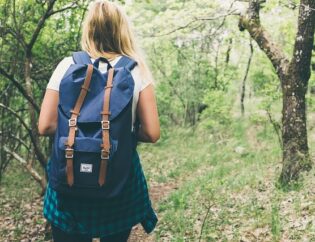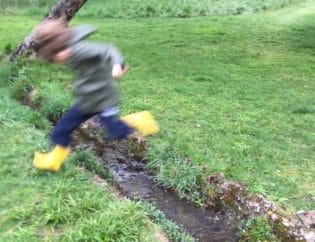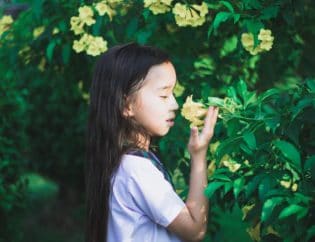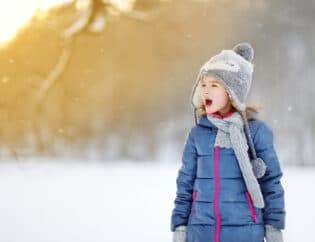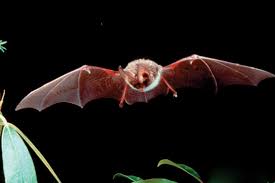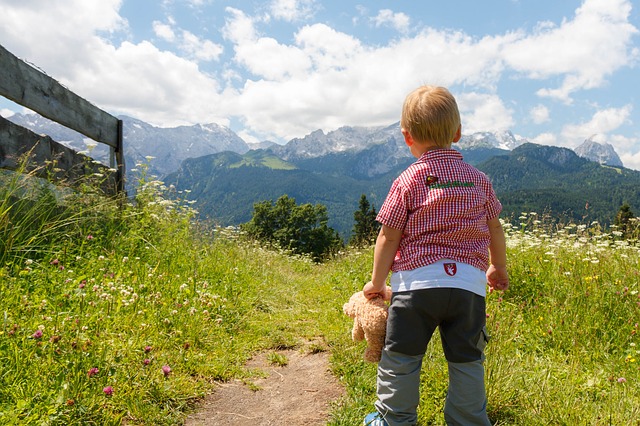
Some say there’s hiking before kids and after. Before kids, you could hike the most challenging trail, for as long as your stamina would allow. You could actually take in the solitude of nature and leave feeling rejuvenated.
With kids, hiking becomes a bit more complicated. There’s all of the stuff you have to cart along with you: clothing, water, snacks, toys, medical supplies, bottles, diapers. Then as if the weather wasn’t enough, there’s the unpredictability of a child’s mood. Will they be up for being carted around for an hour, or walking using their own legs without complaining every 30 seconds? Strapping a 30-pound fussy little person to your back so they are just so much closer to your ear to wail doesn’t always result in a calming experience in nature.
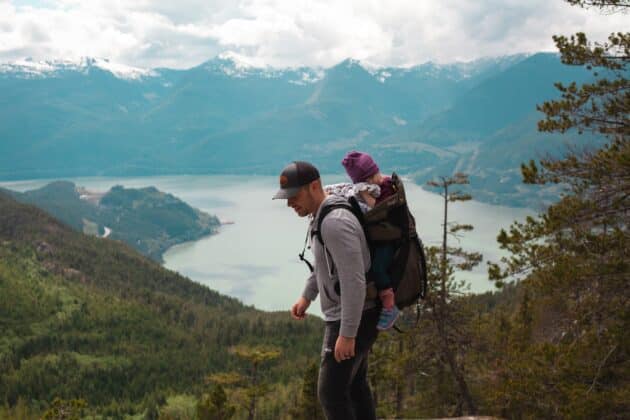
Despite the extra effort, many parents not only pull off hiking with very small hikers, but the activity becomes essential to their family life. Hiking can provide a necessary mental health boost to adults, helping a parent feel connected with nature, themselves, and their baby or toddler. And for some, it’s an excellent remedy for postpartum depression or the isolation that being a new parent can bring.
And of course, there are benefits for the little ones. We know that the more time children spend outdoors, the better their sleep, immune systems, cognitive skills, etc, etc. For fussy babies and toddlers, in particular, hiking can be a miracle cure. Many children may be overstimulated by indoor lights, sounds, and smells. But something about the outdoors just settles them. My son was that way. Take him on a 2-hour stroll through the country and he was marveling at the birds, trees, and clouds until he was fast asleep. Bring him to Target, prepare for a meltdown.
Still, getting your baby or toddler in the hiking state of mind is a wonderful thing but it can take some persistence, practice, and a few tips! Here are some of our tips for hiking with youngins:
Get it on the Calendar
The best tip we know for making nature part of any family is to make it a part of your routine. That means reserving time for a nature hike and getting it on your calendar. Ideally, about 2 hikes a month will mean that you will actually set out hiking at least one day a month. This is great! With more practice and experience you can fill up more Saturdays with hikes.
![]()
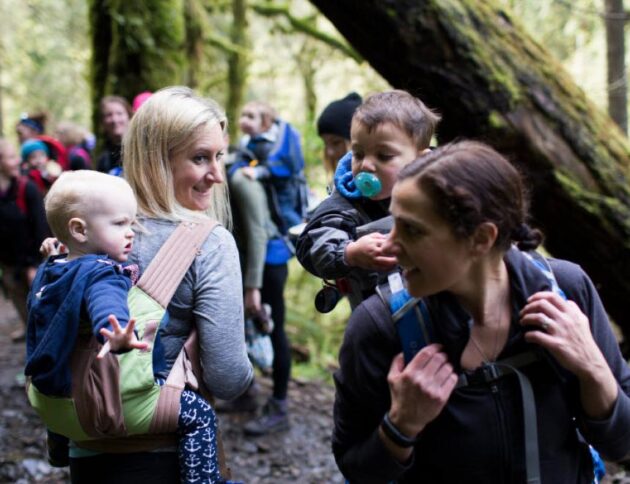
Go with Buddies
Some people like to head out and do things on their own, especially if they worry that their baby or toddler is too fussy for others to put up with. But pairing up with other families can certainly increase parental support— and the fun! Feeling camaraderie with other parents and caregivers with children of similar age can help you feel more motivated and supported. Plus, imagine the great tips and tricks you can share!
If you know of parents with children of similar ages, propose the idea and connect on some mutual dates/locations. Most importantly, make a commitment. If you don’t have hiking partners in mind, groups like Hike it Baby or others you can find on social media can help you connect with other hiking parents of babies and toddlers. Whether you’re interested in becoming a serious baby-wearing hiker or just looking for an occasional experience, you should certainly check out Hike It Baby and see if there is a local group by you!
If you do decide to head out just you and your tot, always make sure someone knows where you are heading.
Prep, Prep, Prep
Snacks. Water. First Aid Gear. Flashlight. Sunscreen. Hat. Natural mosquito repellent and tick spray. Not to mention blankets, layers, rain gear, extra socks and shoes. Whew! Hiking with a little one is not the lightest load. To make sure you don’t forget anything, the American Hiking Society has a list of the ten essential items that everyone should have when heading out for a trek.
Yes, you need a lot of stuff but don’t overgear it. You’ll be miserable being weighed down by too much gear. And don’t underestimate a toddler’s need to be helpful. Let kids (toddlers) share the load. Fill up their mini backpacks with snacks and water.
One thing you should do before any hike is to pack the night before so you don’t forget anything or use the next morning chaos as an excuse to stay inside.

Keep it Simple
You may have set your day hike goal of a 5-mile trek to a beautiful summit vista before kids. After kids, goals look more like 30 minutes without a fit or hiking for a quarter of the loop and then turning around. Keep your hiking goals modest. Babies who are just not in the mood for a day of hiking will let it be known. If you’re hiking with a toddler, downgrade your goals for speed and distance. Toddlers are new walkers and are slow and so ready to explore the world on their own. They just might have other ideas for this hike such as spending 45 minutes digging with a stick.
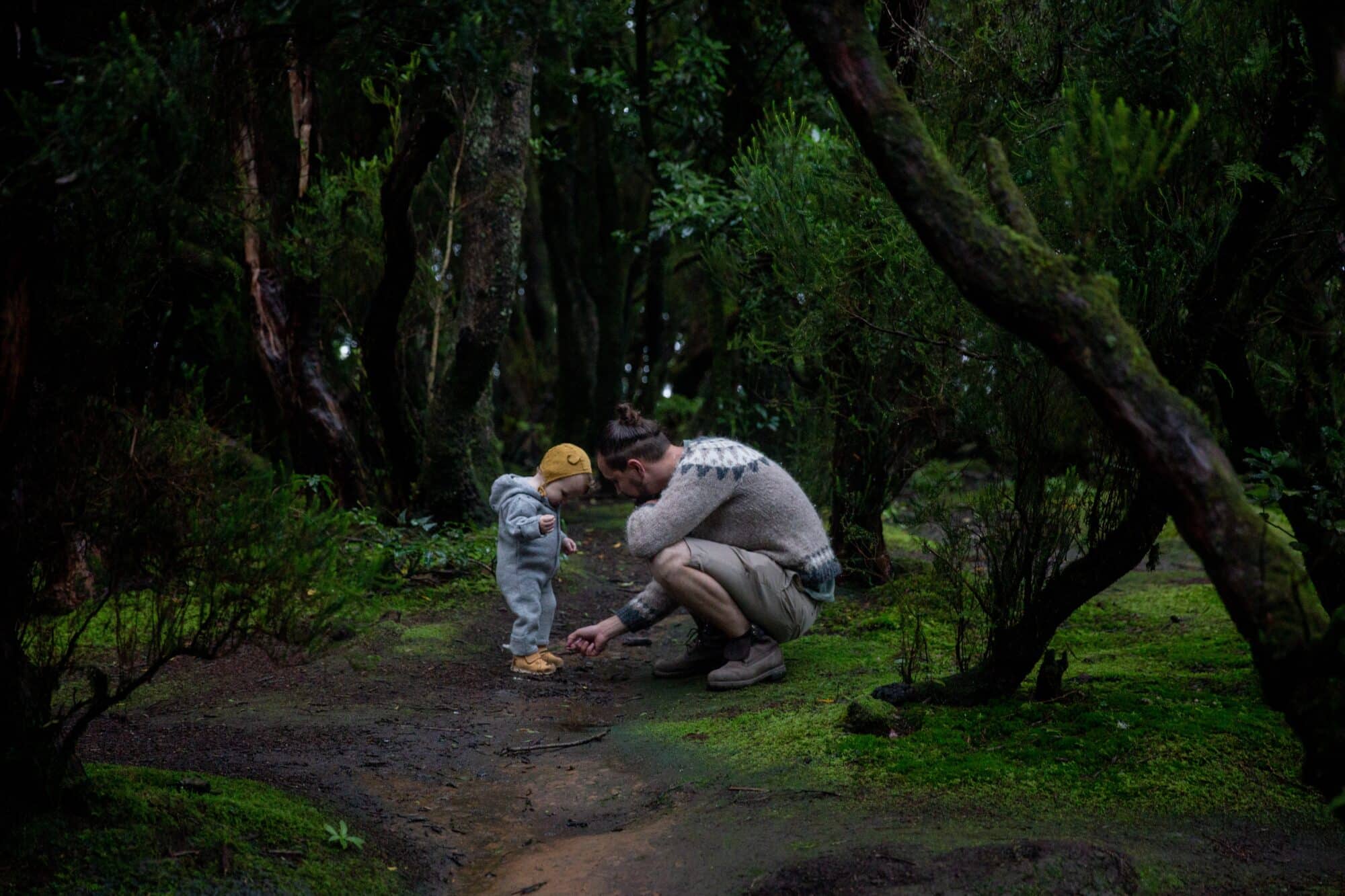
Keep it Toddler-Fun!
Toddlers love a little bit, ok a lot, of fun! One way to keep toddlers engaged during a hike is with games. Think of trail games like scavenger hunts, hunts for fairies and elves, a search for a magical destination. Then there are the real magical critters like bugs! Turn over logs and smaller rocks to see what you find! And if you come across a stream, don’t forget to let your little hiker engage in the classic favorite: throwing rocks in the water.
![]()
Watch the Weather
You should certainly prepare for any weather with extra layers for cooler days and rain gear in case thunder clouds roll in. Just don’t underestimate the elements. Even getting wet in the summer can lead to hypothermia. NOAA has a website that can do pinpoint forecasting on a map, which will give a much better idea of what the forecast is because geography plays a critical role in weather. You should also get in the habit of reading reviews of trails, looking for mentions of cover in case of rain or hail storms, as well as shade for sunny days.
Don’t Forget About You!
As a parent, we often put ourselves last (apropos of this article) or forget about our needs altogether. But taking care of your own needs is also taking care of your child. Always dress well for a hike, especially in terms of good footwear. Wear layers so you are comfortable and not at risk of hypothermia or hyperthermia. Bring lots of water and snacks for you. And of course, never underestimate the value of a good child carrier!



